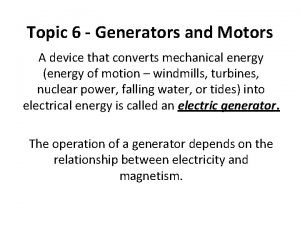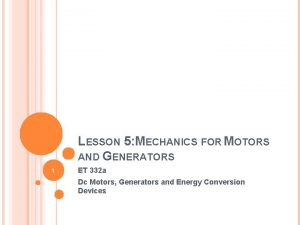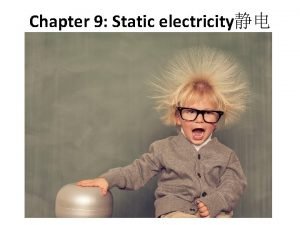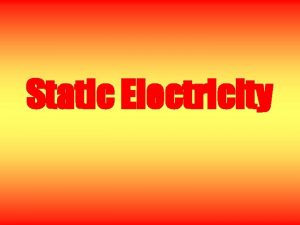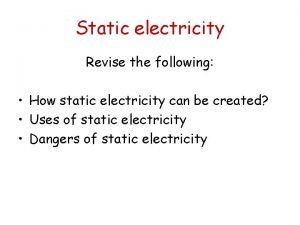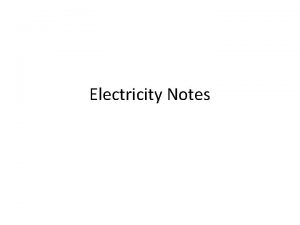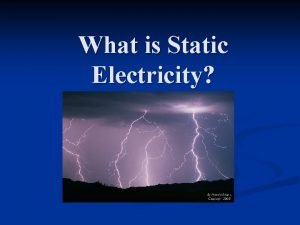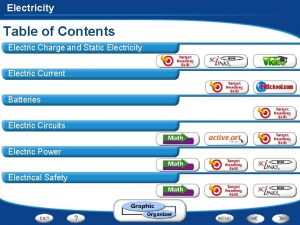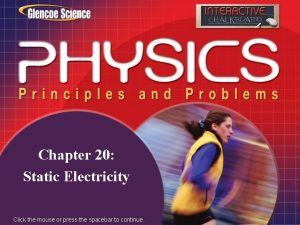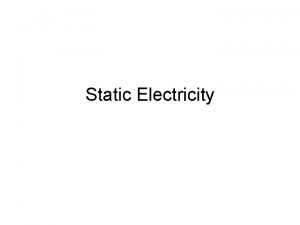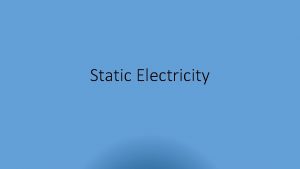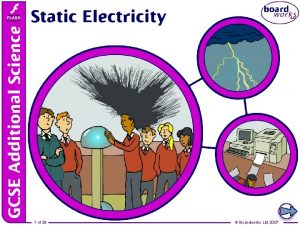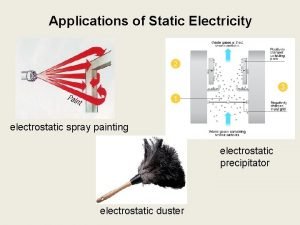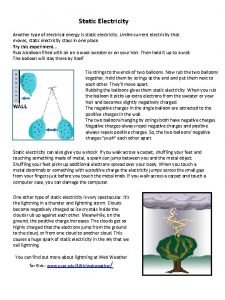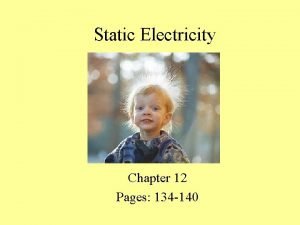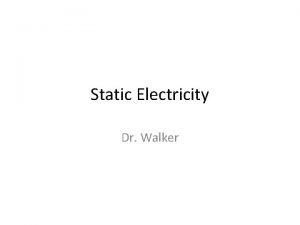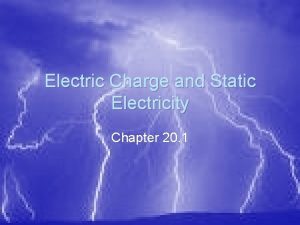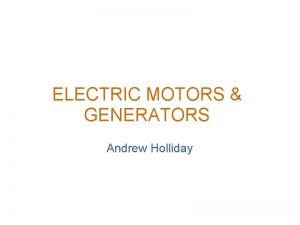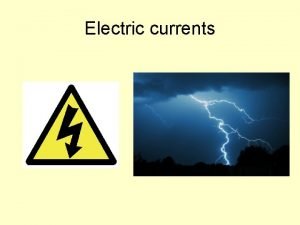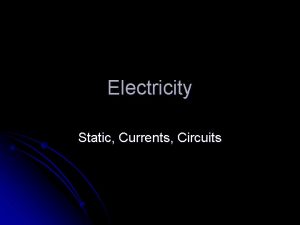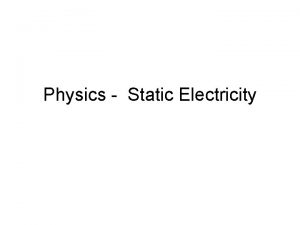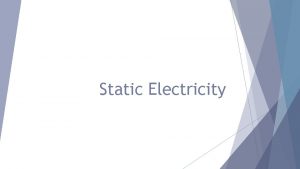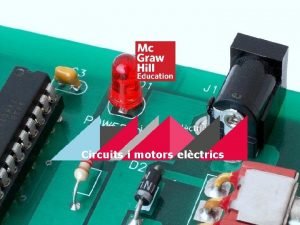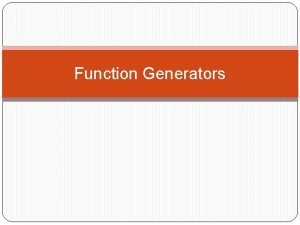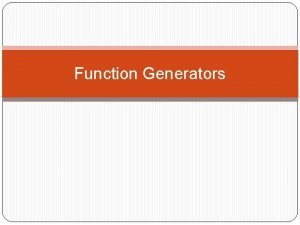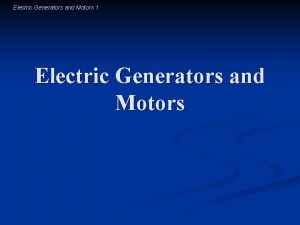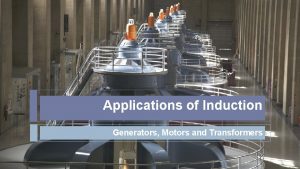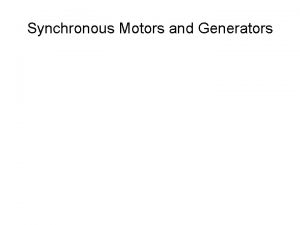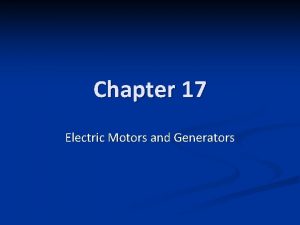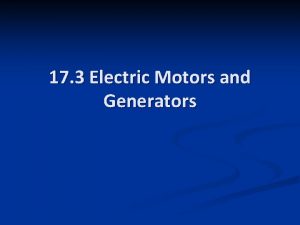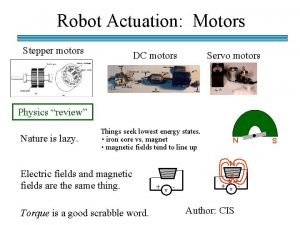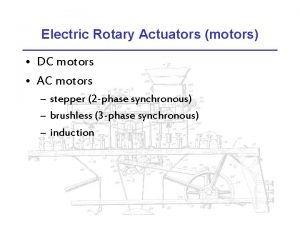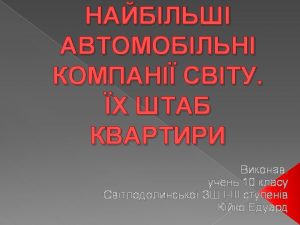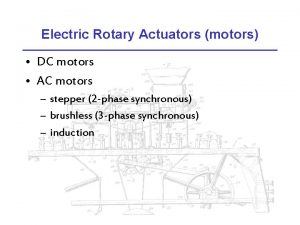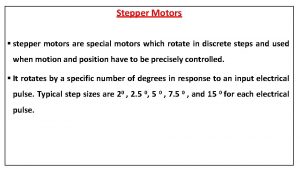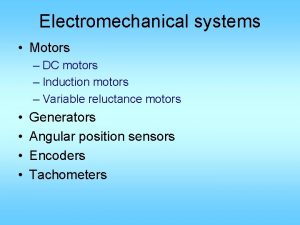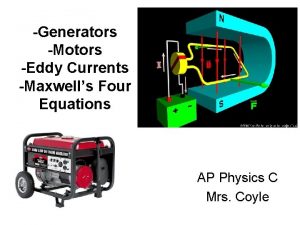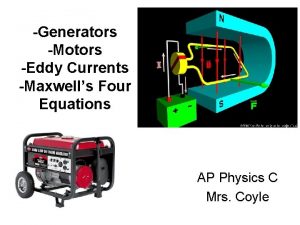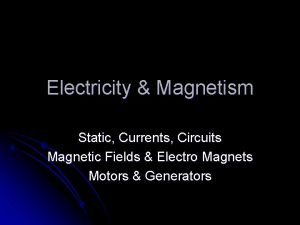Electricity Static Currents Circuits Motors Generators Atoms l



























- Slides: 27

Electricity Static, Currents, Circuits Motors & Generators

Atoms… l Have neutrons, protons, and electrons. l Protons are positively charged l Electrons are negatively charged

Electrons… l Are located on the outer edges of atoms…they can be moved. l A concentration of electrons in an atom creates a net negative charge. l If electrons are stripped away, the atom becomes positively charged.

The world is filled with electrical charges: + - + + + + + -

What is this electrical potential called? l Static - Electricity - - - + ++ ++

Static Electricity l The build up of an electric charge on the surface of an object. l The charge builds up but does not flow. l Static electricity is potential energy. It does not move. It is stored.

Static Discharge… l Occurs when there is a loss of static electricity due to three possible things: l. Friction - rubbing l. Conduction – direct contact l. Induction – through an electrical field (not direct contact)

Electricity that moves… l Current: The flow of electrons from one place to another. l Measured in amperes (amps) l Kinetic energy

How can we control currents? l With circuits. l Circuit: is a path for the flow of electrons. We use wires.

There are 2 types of currents: l Direct Current (DC) – Where electrons flow in the same direction in a wire.

There are 2 types of currents: l Alternating Current (AC) – electrons flow in different directions in a wire

There are 2 types of circuits: l Series Circuit: the components are lined up along one path. If the circuit is broken, all components turn off.

Series Circuit

There are 2 types of circuits: l Parallel Circuit – there are several branching paths to the components. If the circuit is broken at any one branch, only the components on that branch will turn off.

Parallel Circuit

Conductors vs. Insulators l Conductors – material through which electric current flows easily. l Insulators – materials through which electric current cannot move.

Examples l Conductors: l Insulators: l Metal l Styrofoam l Water l Rubber l Plastic l Paper

What is Resistance? l The opposition to the flow of an electric current, producing heat. l The greater the resistance, the less current gets through. l Good conductors have low resistance. l Measured in ohms.

What Influences Resistance? l Material of wire – aluminum and copper have low resistance l Thickness – the thicker the wire the lower the resistance l Length – shorter wire has lower resistance l Temperature – lower temperature has lower resistance

What is Voltage? l The measure of energy given to the charge flowing in a circuit. l The greater the voltage, the greater the force or “pressure” that drives the charge through the circuit.

Difference b/t Volts and Amps l Example l Amps – you could say that… measure how much water comes out of a hose. l Volts measure how hard the water comes out of a hose.

Ohm’s Law l Resistance l Ohms = Voltage / Current = Volts / Amps

Practice with Ohm’s Law Ohms 4 15 2 9 6 Volts 100 150 30 45 48 Amps 25 10 15 5 8

What is an electromagnet? l Electromagnet – a magnet made from a current bearing coil of wire wrapped around an iron or steel core.

What is a generator? l Generator – a machine that changes mechanical energy to electrical energy l Usually use moving magnets to create currents in coils of wire.

What is a motor? l Motor – a device that changes electrical energy to mechanical energy that can do work.

That’s It !!!!
 Static electricity and current electricity
Static electricity and current electricity Current electricity
Current electricity How are static electricity and current electricity alike
How are static electricity and current electricity alike Generators and motors
Generators and motors Smart sensor abb
Smart sensor abb Si units for torque
Si units for torque What is deep current
What is deep current At stp which substance is the best conductor of electricity
At stp which substance is the best conductor of electricity Advantages of parallel circuits over series circuits
Advantages of parallel circuits over series circuits Static electricity
Static electricity Stationary electric charge
Stationary electric charge Static electricity
Static electricity What is static electricity
What is static electricity Static electricity
Static electricity Static electricity
Static electricity Static electricity chapter 20 answers
Static electricity chapter 20 answers Difference between charge and electric charge
Difference between charge and electric charge Static electricity
Static electricity Static electricity examples
Static electricity examples Bill nye electricity worksheet
Bill nye electricity worksheet The law of charges
The law of charges Static electricity summary
Static electricity summary Spray paint static electricity
Spray paint static electricity Static electricity one cloud to another
Static electricity one cloud to another Static electricity by calamityofcolors
Static electricity by calamityofcolors Static electricity
Static electricity How was electricity discovered
How was electricity discovered Static electricity by calamityofcolors
Static electricity by calamityofcolors



